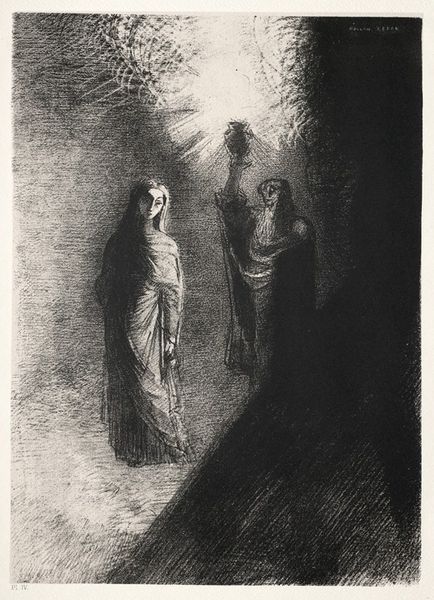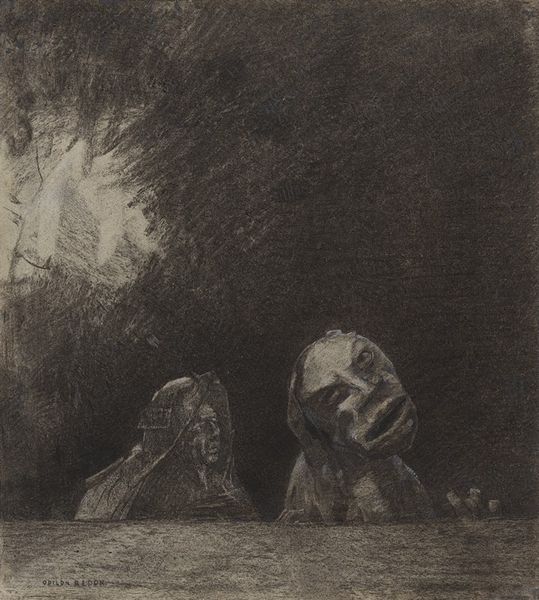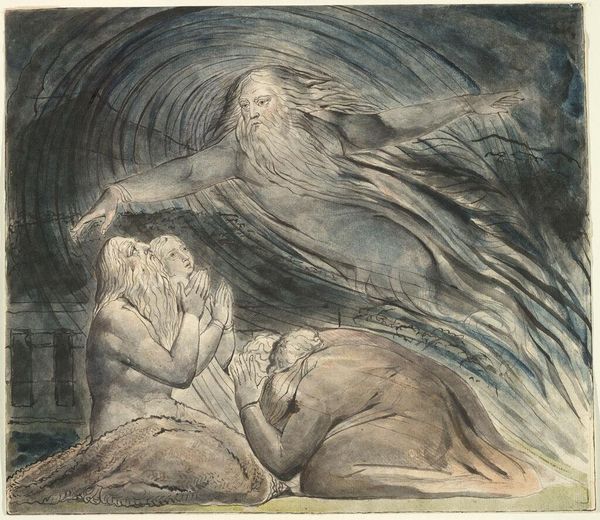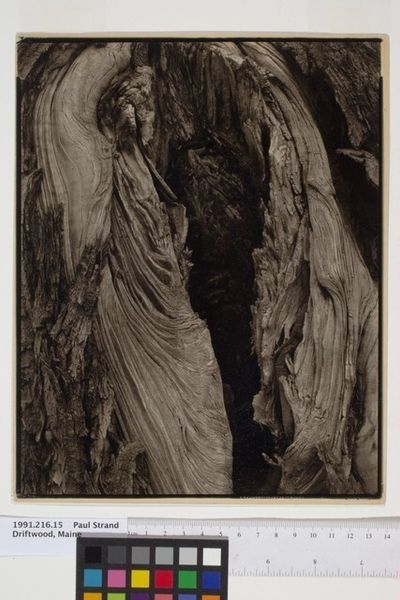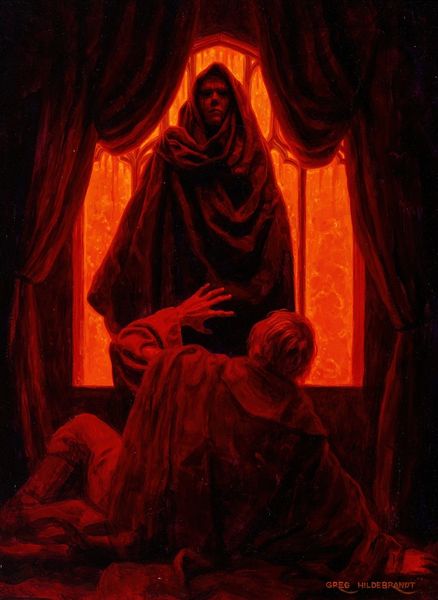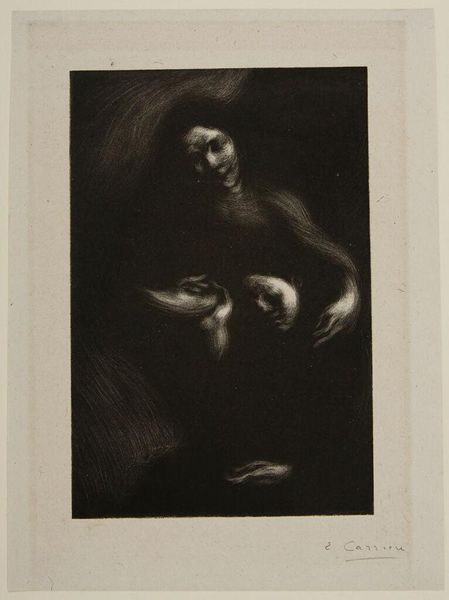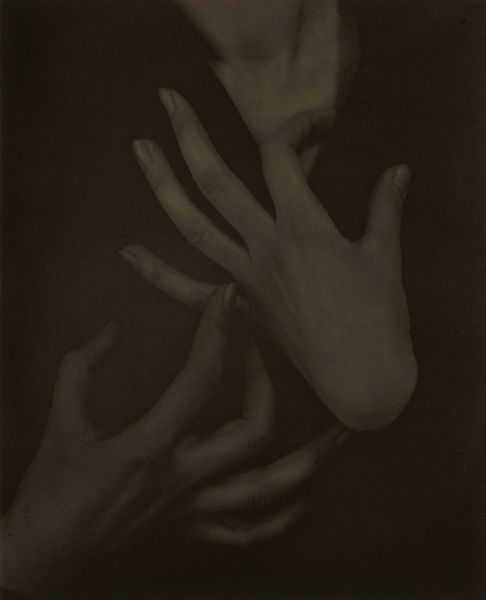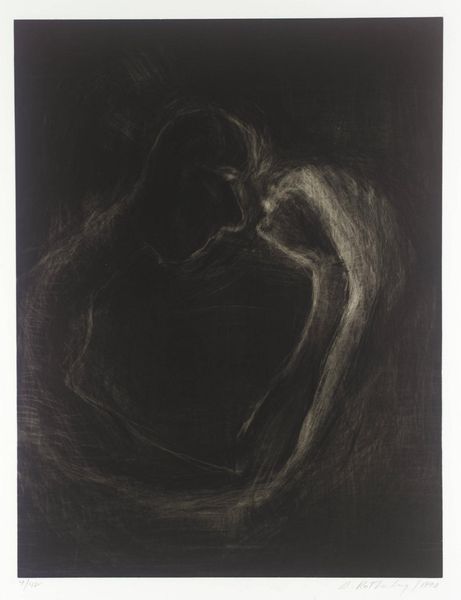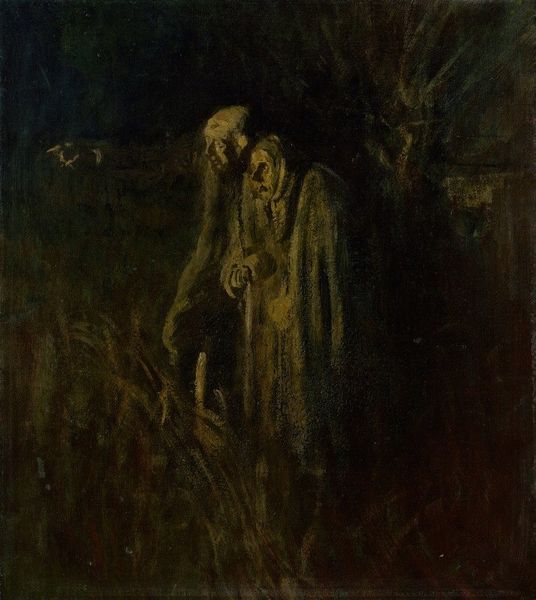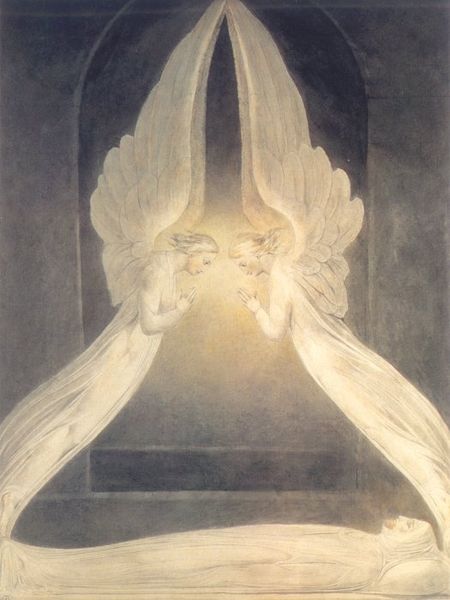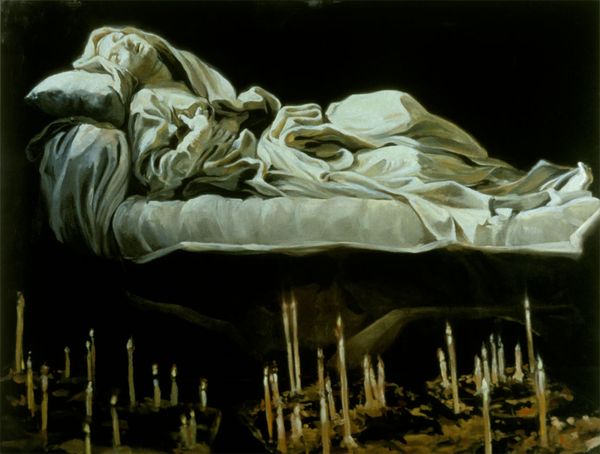
Copyright: Public domain
Curator: This evocative charcoal drawing, created by James Tissot in 1885, is titled "The Apparition." The artwork resides in a private collection. What strikes you about this composition? Editor: The overwhelming sense of darkness, contrasted by that ethereal glow... it's intensely dramatic. It's as if we're witnessing a secret revealed in the dead of night. Curator: Tissot’s body of work often grappled with social dynamics of the late 19th century and changing role of women, yet this piece pulls him firmly into more symbolist territory. Note the historical context here; 1885 places it squarely within an era of rapid industrial change and burgeoning spiritualist movements. What intersectional narratives do you see at play? Editor: Well, immediately I think about veils. There's a cultural weight here tied to what veils mean—power, secrecy, religious piety—and how those symbols differ vastly across time periods, across geographic locations, across even different interpretations in gendered dynamics. Curator: Exactly. Considering those complexities helps decode that loaded cultural artifact, making us consider whether these figures are subverting or perpetuating gendered ideas of that moment. Their roles, both as perceived figures of apparent social importance as shown through their garments and as conveyors of this spiritual glow, forces questions of social expectation in the changing and expanding global landscape. What does one do with power such as that they seem to hold here? Editor: Absolutely, and that's further complicated by their gazes, or rather, the contrast between them. He looks directly, confidently out, while she looks down at this... light source? Something within her own hands, indicating perhaps some kind of nascent personal agency, if indeed these gazes may even symbolize interiority in some way, as artists are sometimes want to explore... Curator: Yes, and thinking about the cultural shift from the objective positivism toward explorations of unseen, immaterial forces: faith, perhaps hope. Those questions around visibility become further charged, perhaps critiquing how marginalized groups could hold power through "invisible" spiritual means during oppressive structures. It could be commentary as resistance. Editor: It’s that central glow and the dark, heavily contrasting composition that pulls the gaze. Almost beckoning you forward as the viewer and, dare I say, creating a type of continuity from their time to our current moment. Curator: Precisely, it shows us a snapshot of cultural flux while challenging viewers to find points of resistance or, conversely, recognize areas needing future change, too. Editor: Leaving us indeed with more to consider than answers to neatly unpack and display for a day and done type deal.
Comments
No comments
Be the first to comment and join the conversation on the ultimate creative platform.
